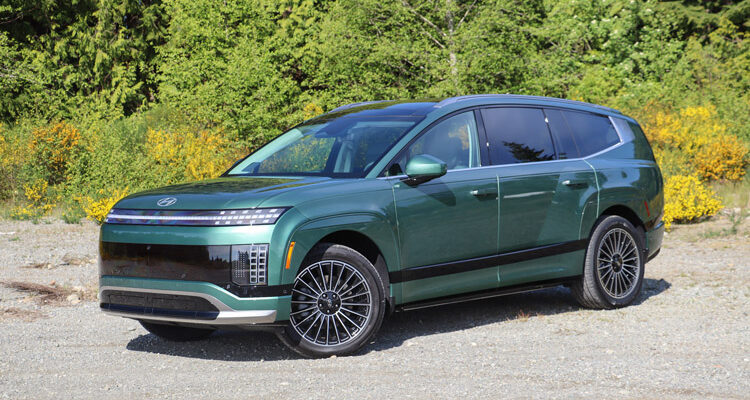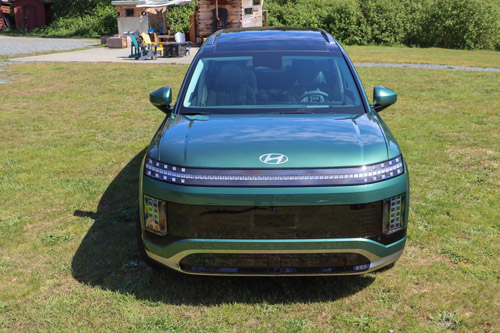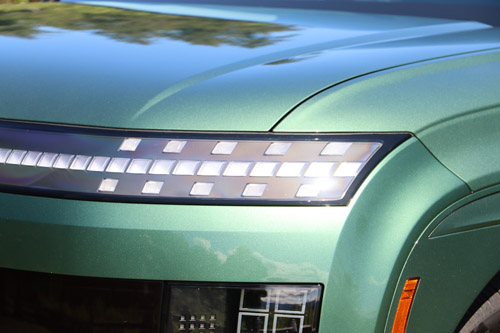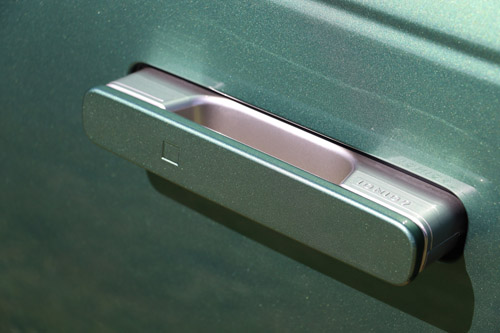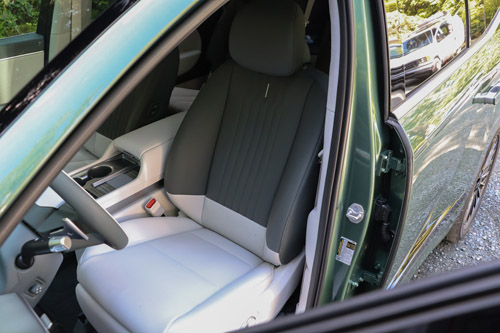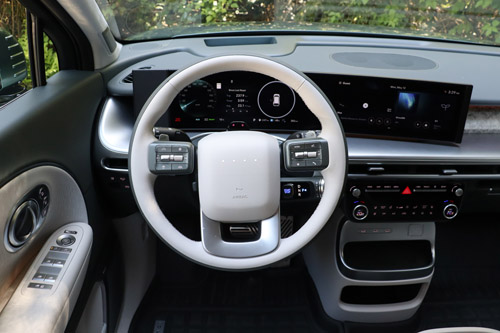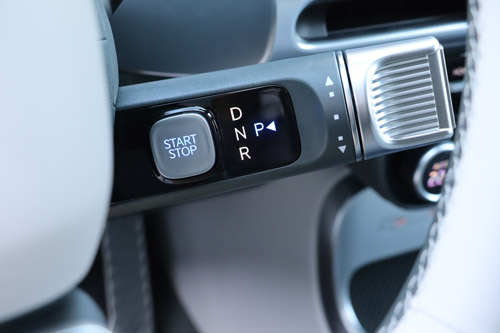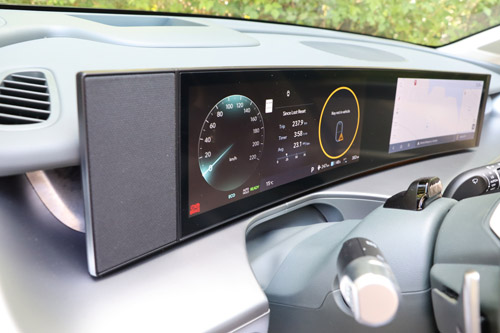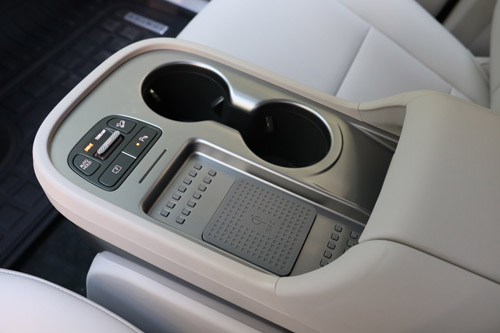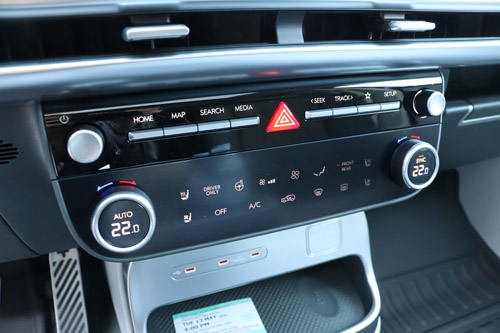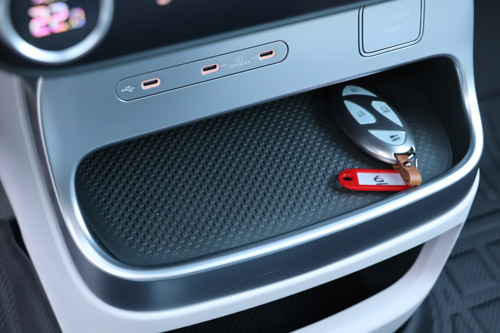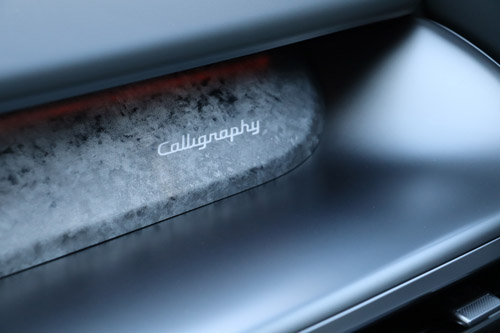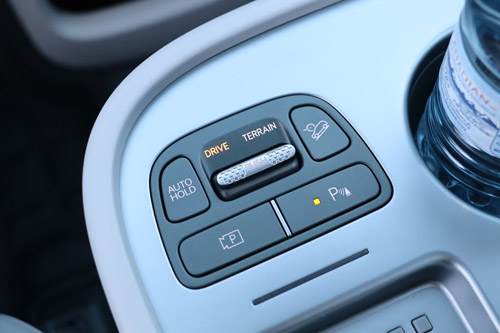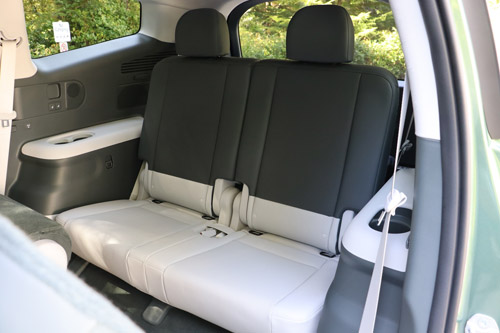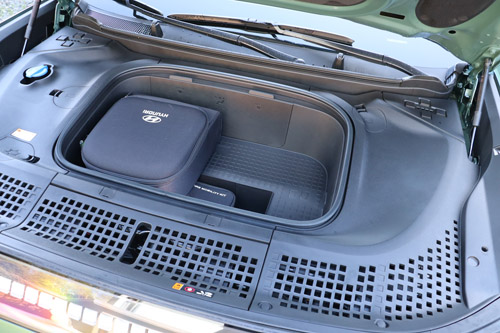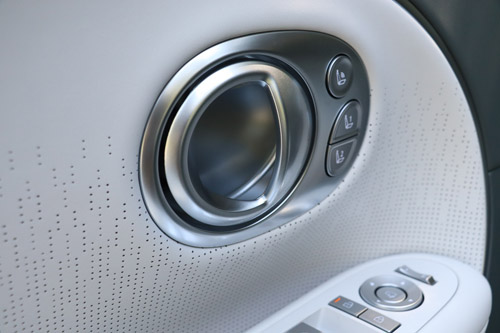Ucluelet, BC — For 2026, Hyundai’s popular Ioniq full-electric brand of cars and crossovers is expanding with its biggest entry yet: the Ioniq 9 three-row SUV. And lucky us, we got to be some of the first to put it through its paces on the beautiful westernmost coastline of BC’s Vancouver Island.

Not sure if I’d use the word “beautiful” to describe the Ioniq 9, but it’s a very cool-looking thing, especially when finished in all-new Ionosphere Green, a shade I’m more used to seeing on Aston Martins. The wheels range in size from 19-21 inches, with all of them getting special aerodynamic designs. Other drag-reducing touches include no exposed aerials, smooth front end with active aero flaps on the lower splitter and “boat-tail” style rear end. It all contributes to an 0.27 coefficient of drag, which, along with a 110 kwh battery, helps achieve up to 539 km of range depending on spec. On spec, but also on powertrain type; the Ioniq 9 is available either with single-motor RWD or dual-motor AWD. RWD can only be had at base and it makes the longest range but also the lowest power. It’s good for 215 horsepower and 258 pound-feet of torque, while the AWD model goes all the way up to 422 hp and 516 lb-ft.
The Ioniq 9 comes available only as a three-row SUV – there is no “more cargo, please” two-row version – and will be able to seat between six and seven people across five trims: Essential RWD ($59,999), Preferred AWD ($64,999), Preferred AWD+ (64,999), Preferred AWD w/Luxury Package ($76,499) and the Calligraphy you see here ($81,499). Seat count depends on which style of second-row seating you select: either a pair of captain’s chairs or a three-person bench. The captain’s chairs come with power folding and reclining as standard, while the bench can only be folded with the pull of a manual lever. In addition to power-recline, the second-row seats get an optional deployable footrest for added comfort either while on the move or when stopped — at a charger, for example. The driver isn’t left out in the cold comfort-wise, either; their seat can be full reclined as well, just not while moving, of course!
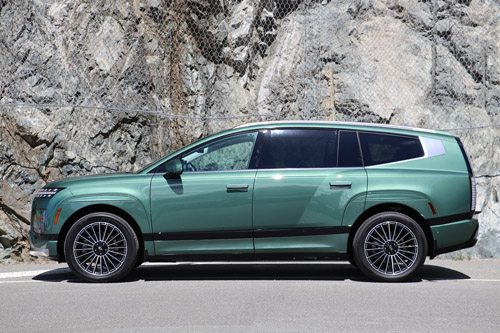
The Ioniq 9 is longer, taller, a little wider and has a longer wheelbase than its Kia EV9 cousin, meaning interior room is very generous in all three rows. I found third row space to be especially eye-opening (and leg-stretching); even though the roofline sweeps down fairly seriously towards the rear, third-row headroom is very good and two adults can easily fit back there. It would be nice if the second-row seats could move just a little more forward for easier access, but you can always slide between them in the six-passenger version. Also, they will slide forward automatically if you try to fold down the front seats and the car senses that they won’t clear the second-row seatbacks. At over 1,323 litres with all seats folded and a frunk – which comes in two sizes, depending on whether there’s a front motor or not – you have the ability to haul plenty. Further, with an optional digital rear-view mirror, you can pack your wares nice and high (and your passengers tall) without affecting rearward visibility.
Another neat easter egg is an optional front centre console dubbed “Universal Island”, which is Hyundai-speak for the fact that it can slide fore and aft depending on which row needs access. The centre storage bin lid can also be opened from either the front- or second-row, which is great. There’s also a two-level storage bin at the base of the centre console, each one with a grippy surface (and one with a spot for the keyfob) so the items you store there – shades, wallets, phones – won’t slide about. Add a centre console equipped with a wireless charge pad (there are also three USB-C ports; there are seven total across all three rows), two cupholders and drive/terrain select controls, and you have a fully-equipped front cabin.
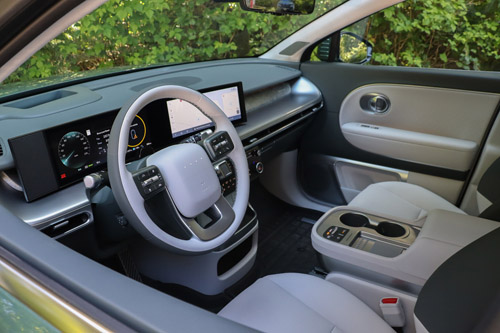
Wireless Apple CarPlay and Android Auto come as standard, and they get displayed on a bright 12.3” curved display, which is matched by the instrument cluster size and there’s also a head-up display (HUD) on the top two trims. Those who prefer traditional buttons and knobs – as I do – will be happy to know that while some climate and media controls are handled by a haptic surface, others use an array of traditional buttons, which are easier to operate while driving or with gloves on.
Speaking of climate controls: the Ioniq 9 comes standard with a heat pump, HVAC vents in all three rows, tri-zone automatic climate control and heated front seats. The second row gets optional heating and ventilation and there’s an optional heated steering wheel as well. That’s all pretty good, but not having a heated steering wheel as standard on a $60K SUV in Canada is a bummer. Other optional interior niceties include massaging seats (which can easily be controlled by a door-mounted button – nice), a full-length panoramic sunroof and leatherette seating surfaces.
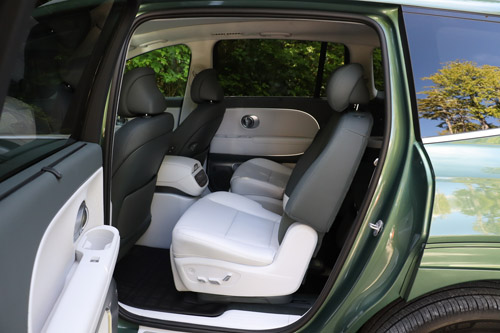
On the road, the Ioniq 9 drives kind of how it looks: smooth. Repetitive bumps are swallowed up with ease – even with those big 21” wheels thanks in part to their being surrounded by rubber with tall sidewalls. This makes them look a little smaller than 21”, but it ensures that concrete cracks, expansion joints, railroad tracks and so on are dealt with. There are no adaptive dampers or self-levelling air suspension, but even without all that the ride is a revelation. At over 6,000 lbs. the Ioniq 9 is no lightweight and even thought the big, heavy 110 kwh battery is mounted nice and low, you will feel some body roll through repetitive turns as the weight moves back and forth. A self-levelling air suspension might help here, but alas that is not an option at any trim level. Which makes sense at the 60-65K level, but does raise eyebrows as we get to the 75-80K level.
In hi-po 422 hp form – which you can get in both mid spec Preferred AWD+ and top spec Calligraphy trim – you can hustle the Ioniq 9 on tip-in. It gets up and going nice and quick despite its weight and while you will run out of puff as you start into triple figures, I never experienced a time where I felt like I wouldn’t be able to complete a pass on a narrow two-way road (of which there were quite a few on our drive across Vancouver Island) or when entering the freeway. There is plenty of pull here for the Ioniq 9 to be a perfect everyday and road trip companion.
That feeling only increases when you consider that the Ioniq 9 comes standard with an ultra-fast NACS charge port; expect 10-80 per cent of charge in about 25 minutes. If you don’t want to depend on the Tesla Supercharger network (or are willing to wait for other NACS charge networks to go live), each Ioniq 9 sold comes standard with adapters for a level II or DC fast charger, both more commonly accepted at the moment.
There really is a whole heck of a lot to like here. Hyundai is jumping into the EV game with both feet and if you’re going to do that and make EVs such a large part of your portfolio, you’re going to have to deliver in the most popular vehicle segments – like this one. With the Ioniq 9, they have done just that.



